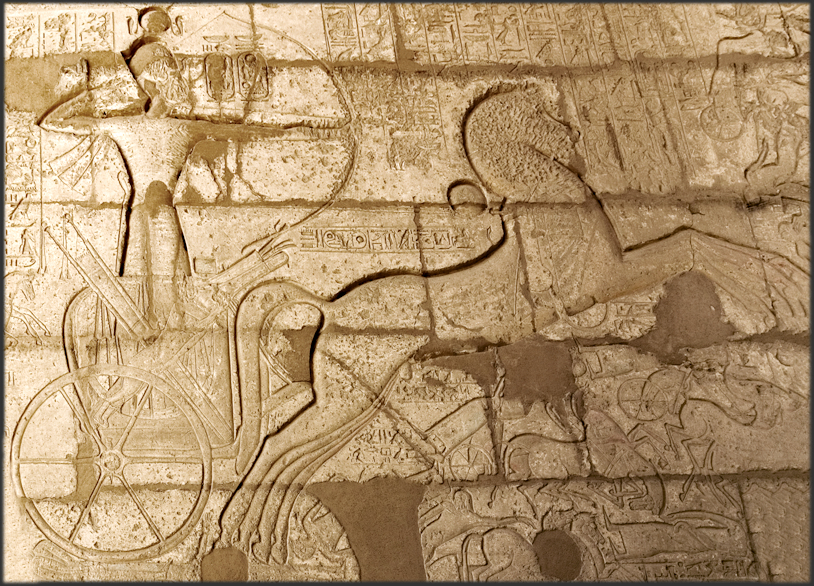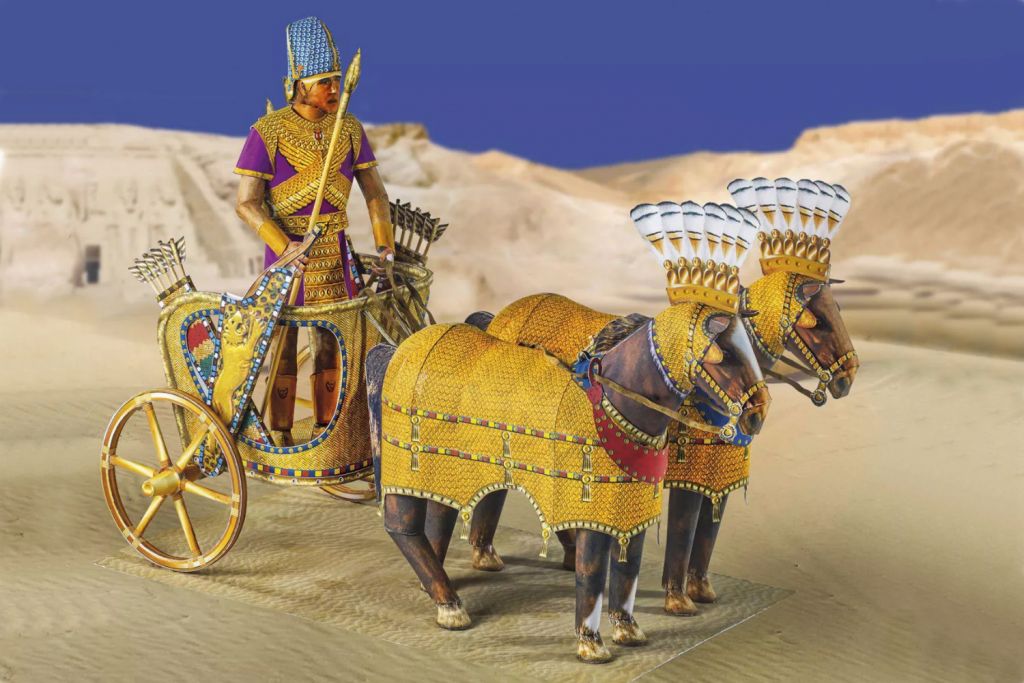Egyptian Chariot Ramesses
Cardboard model of an Egyptian chariot with Pharaoh Ramesses II as the charioteer. Magnificent colours, lifelike horses, the chariot with the weapons and the charioteer - a large and magnificent model that will delight any experienced model maker.
Egyptian chariot with Ramesses II.
Cardboard model of an Egyptian chariot with Pharaoh Ramesses II as the charioteer. Magnificent colours, lifelike horses, the chariot with the weapons and the charioteer - a large and magnificent model that will delight any experienced model maker.
The craft kit includes 11 (!) high-quality, colourfully printed craft sheets, instructions and building tips. Length: 30 cm, width: 18 cm, height: 26 cm, Scale approx. 1:9. Difficulty level 2 (from 0 to 3, medium difficulty).
Pharaoh Ramesses II with chariot
In early history and antiquity, chariots were single-axle military vehicles harnessed to horses. They usually had two wheels and a simple bridge to which the horses were harnessed. The platform had a D-shaped railing at the front and sides. The chariot was usually splendidly decorated.
The Egyptians received a variety of weapon technologies, including chariots, from the Hittites and the Hyksos, a group of foreign kings. Pharaonic Egypt was a powerful nation that could afford to purchase and maintain a large number of chariots. Their manufacture and maintenance required specialised knowledge and great effort. It also required large herds of horses, which were not available in Egypt at the time. It was necessary to provide suitable stabling, care and training for the animals. The training of charioteers and horse trainers was also very time-consuming. Large stables dating back to Ramses II were found during excavations.
An Egyptian chariot weighed around 30kg and was so light that one man could carry it. The chariots were mostly used by archers, but the fighters also had close combat equipment such as shields, spears, axes and throwing spears. The chariot units were the elite of the Egyptian military and were organised in groups of 25 chariots. In a battle, numerous groups of chariots stood on the flanks of the infantry, while others stood in reserve behind the front line.
During an attack, several hundred chariots travelled close together. This massive attack also had a psychological effect on the enemy. Pursuing the fleeing enemy was the task of the reserve. As a rule, pharaohs fought with body armour. It is unclear whether they went ahead, were part of the army or stayed in the background.
Reliefs from Egyptian tombs and temples, which are around 3600 years old, show pharaohs and warriors marching into battle in chariots drawn by horses. However, the vehicles were not only popular with the Egyptian military, but also with the wealthy upper classes as a prestigious means of transport. They were not only used in war, but also for hunting. At this time, people were fascinated by the capabilities of modern technology, its practicality and comfort. A chariot could reach a speed of 40 kilometres per hour. Until then, such a speed was unimaginable in antiquity. Tutankhamun's burial chambers contain several chariots that were found as grave goods and can still be seen today in the Egyptian Museum in Cairo.
A well-known episode in history is the Battle of Kadesh, in which Egyptians under Ramesses II and Hittites, also equipped with chariots, faced each other. The battle was almost lost by the Egyptians and the pharaoh was faced with a superior force of enemies. Left alone by his soldiers and charioteers, Ramses was only able to save his own life thanks to his fast horses.

| Delivery time | 1-2 weeks |
|---|---|
| weight | 1.000000 |
| size | 22 cm |
| Scale | 1:9 |
| Level of difficulty | 2 - medium |
| Type of model | Figures |
| Era | Egypt |
| Material | Cardboard |

